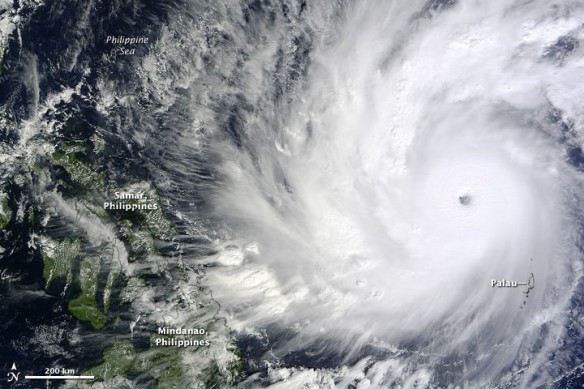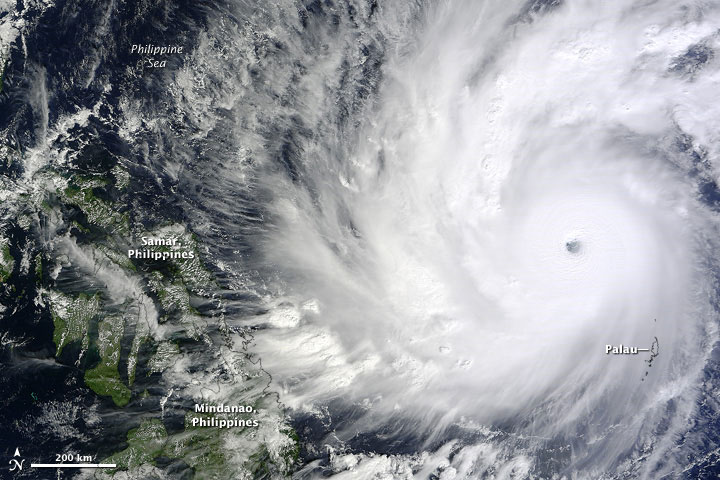
The twenty-second tropical weather system (and eleventh typhoon) of the year in the Western Pacific Ocean had the potential to be one of the most damaging of 2014. In early December, Hagupit approached The Philippines as a major and slow-moving typhoon that threatened to hit the islands with torrential rain and a large storm surge. Captions and Image Source: NASA / Earth Observatory
Excerpts;
Typhoon Hagupit slammed into the central Philippines’ east coast late Saturday, knocking out power and toppling trees in a region where 650,000 people have fled to safety…
As Hagupit Nears Philippines, Here’s What You Need to Know About Typhoons, National Geographic
Storm surge is the number one killer in tropical cyclones. MIT’s Emanuel likened a storm surge to a tsunami—one just happens to be caused by earthquakes (tsunamis), while the other is generated by hurricanes. The worrisome thing in all of this, though, is that climate change will likely increase the frequency of “the high-end hurricanes,” Emanuel said, those categorized as 3 or above (the scale tops out at 5). These powerful storms produce a lot more rain—which increases the flood potential, he said. They also tend to generate strong storm surges. When stronger storm surges ride on top of rising sea levels, who knows what can happen?









